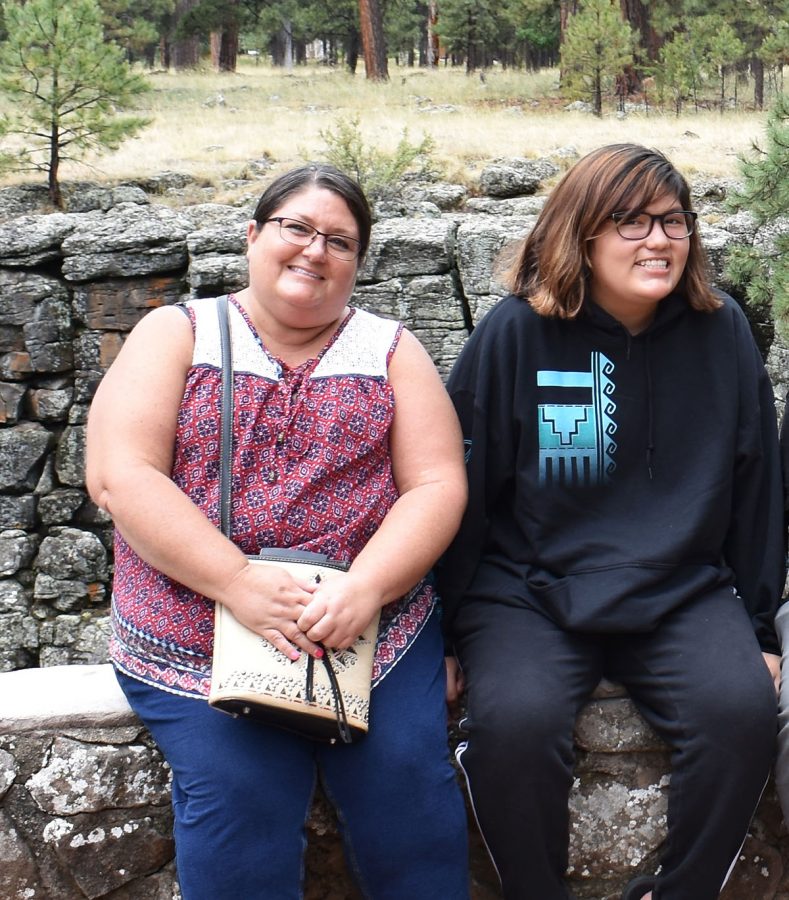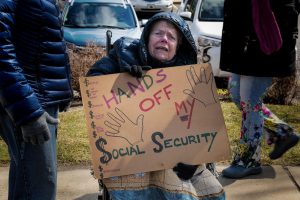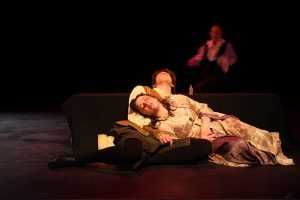Local Native Americans reflect on how their people have been subdued and the lasting effects
Credit: NaMe Greymountain
Kalamazoo Public Schools faculty member Robin Greymountain (left) and Loy Norrix High School freshman Aanje Greymountain (right) posing at the edge of “Assini Aglay Bigun” in Flagstaff, AZ, during a trip back to their home in Arizona. “Assini Aglay Bigun” is a sacred mountain in Navajo culture, and the location where Aanje Greymountain and her sister NaMe Greymountain (not pictured) were born.
October 22, 2019
A shadow hangs over the United States of America, one that has lingered since the conception of the nation. It is well known that the US has a history of discrimination based on the color of one’s skin, and that many people have died due to the discrimination. Almost two hundred years after the Trail of Tears, however, these biases still taint American society and culture.
While racial discrimination has faced more scrutiny from the nation in more recent years, many groups still suffer without the same recognition and action, Native Americans foremost among them. The ghost of America’s past is now haunting its present.
During the more than three hundred years after Columbus first shipwrecked on an island off the coast of South America, indigenous groups have been massacred, enslaved, degraded and assimilated. From the Wounded Knee Massacre to the Spanish enslavement and conversion of natives, from the forced migrations of groups such as the Cherokee to the United States Indian boarding schools designed to strip away any cultural identity, many efforts have been made by European colonists and their descendants to destroy indigenous people and culture.
According to “Native American History and Culture: Boarding Schools” by an unknown author for the Partnership With Native Americans, the Native American boarding schools used education as a tool to assimilate Indian tribes into “the American way of life.”
Carlisle Indian School in Carlisle, Pennsylvania, was established by Col. Henry Richard Pratt, whose motto was “Kill the Indian, save the man.” The students of the off-reservation boarding schools had any indication of the identity of their home culture stripped away. The braids common for the boys were cut off, the children given standard uniforms and Anglicized names, including last names and the students were forbidden to speak their native tongue.. Boarding schools taught history from the perspective of the colonists, with Columbus’ arrival being heralded to the students as “a beneficent development in their own race’s fortune.”
Robin Greymountain, the Kalamazoo Public Schools Homeless Liaison and Title I Literacy Facilitator, is of Native American descent, specifically Anishinaabe, and a supporter of Native American rights and representation. She lived on an Anishinaabe reservation in the Upper Peninsula of Michigan as a child, although her family moved on and off the reservation for jobs. She spoke on boarding schools and the impact they have had on Native American communities and families, saying, “The parents that have gone through boarding schools, they didn’t have a role model on how to be a parent. The things that happened in boarding school, you have your typical what happens in the school day problems. The dorm aid that’s there, which is somebody that is hired to be there, to help take care of the kids.”
“The problems are different depending on the reservation you are talking about. My reservation, kids don’t go to boarding school anymore, they go to a charter school on the reservation,” said Robin Greymountain.
Regarding her time as the principal of Parkwood-Upjohn Elementary School, Robin Greymountain said, “I tried to, each year, go into the classrooms and present to the grade levels about what modern day Native Americans are, so they aren’t just seeing what history has to teach that are out-of-date stereotypes.”
Aanje Greymountain, freshman at Loy Norrix High School, has also been witness and subject to the impact of education on Native Americans, on both the Native Americans themselves and other groups that come into contact with them.
Recounting a personal experience with discrimination, Aanje said, “I wore traditional clothes to my eighth grade graduation, I had to give a speech that day too.” Aanje continued, “Everyone, except for my good friends, were staring at me. One of my friends who was looking, I would say ‘hey’ and they would ignore me because I was wearing traditional clothes.”
Robin Greymountain also spoke about misconceptions non-Natives have of Native American culture and the propagation of those misconceptions.
“The Navajo culture and creation story is different from the Anishinaabe [Ojibwe] culture and creation story. We [Anishinaabe] had more experience and dealings with having to immerse yourself in mainstream society than the Navajos did.”
For Native Americans overall, life is starting to improve. There has been an increase in support and calls for change in recent years, as evidenced by the variety of protests from tribes against corporations encroaching on their lands. The problems plaguing reservations are coming under more scrutiny.
In the article “Kimberly Teehee named by Cherokee Nation as first ever delegate to Congress” by Chandelis Duster on CNN, the Cherokee Nation used a promise made to the tribe in a nearly 200-year-old treaty for the first time, giving the nation representation in the United States House of Representatives. The Native American tribes, muted for so long, are starting to be able to speak out.












